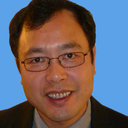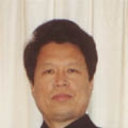With the rising utilization of cardiovascular implantable electronic devices (CIEDs), infections secondary to device implantation are increasingly encountered. Staphylococcus aureus and coagulase-negative staphylococci are usually the predominant causative organisms. A CIED infection due to non-tuberculous mycobacteria (NTM) is extremely rare.A 68-year-old man was admitted to our hospital with a history of pain and swelling at his cardiac resynchronization therapy-defibrillator (CRT-D) pocket site, for 4 days. The CRT-D had been implanted 2 weeks prior. The exudate smear was positive for acid-fast bacilli and culture results revealed rapidly growing nontuberculous mycobacteria (RGM). After an urgent removal of the device followed by 1 year of antibiotic treatment, the patient was completely cured. A new device was finally implanted, 3 years later.Infections caused by nontuberculous mycobacteria following the implantation of cardiac devices are very rare. The typical manifestations of post-implantation CIED infections caused by RGMs include an early onset, with local redness, swelling, and spontaneous drainage. Systemic symptoms such as fever, chills, and fatigue are absent. Mycobacterium fortuitum is the most common species of RGM implicated in CIED infections, the manifestations of which usually appear within several weeks of the implantation procedure. An urgent removal of the device and appropriate antibiotic therapy are essential therapeutic measures. This is the first such reported case, in which the patient has been re-implanted with another device at the same site, after achieving a complete cure. We followed-up the patient for an additional 3 years and observed that the patient remained free of infection. Our case report shows that though an RGM infection is rare and difficult to treat, it can be completely cured. In addition, we demonstrated that it is subsequently possible to safely re-implant a CIED for the patient, at the same site.



